Your tire is the jack of all trades in your car and is just as important as your engine. One of the obvious common but avoidable mishaps of owning a car tire puncture. It is not a question of will it but rather when will it get punctured and what should you do when it happens.
Please note that puncture is far different from the damaged tire. A punctured tire is when a foreign object penetrates your tire causing it too slowly decrease the tire pressure and eventually causing a flat tire. A damaged tire is when your tire is beyond hope and need to be replaced.
Yes, you can repair a tire puncture but within its limitations and the type of puncture. Philkotse.com will help you determine if the tire puncture is repairable and how to do it.
Small injuries in your car can cause bigger trouble if not taken care of properly. This applies everything in your car. If it is not properly repaired it could damage the whole tire and result in replacing it.
1. To understand the tires
First thing first, is your tire is tubeless or with a tube?
Tubeless tires have an advantage when it comes to a tire puncture. Of course, it still gets punctured but it does not get flat immediately and still gives you some time to drive home or to a service area. While for tires with the tube it is not advisable to drive it without repairing the punctured tire.
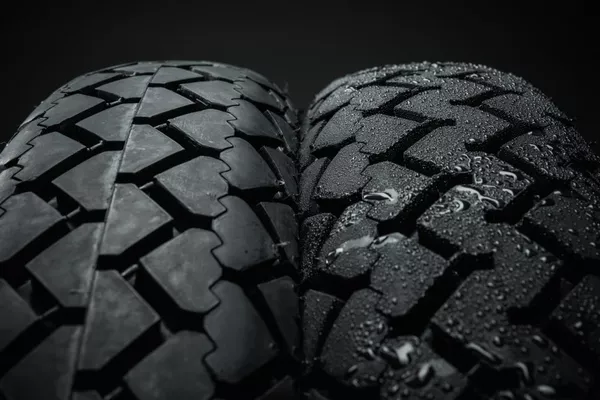
Tubeless tires have an advantage when it comes to a tire puncture
>>> Check out: Benefits & drawbacks of tubeless tires, Run-flat tires & self-inflating tires.
Second is to evaluate your punctured tire
Check the size and location. Note that your tire should be dismounted on the rim to thoroughly inspect the inside. Another way besides this, like; on-the-wheel repair and with string plugs are just considered temporary.
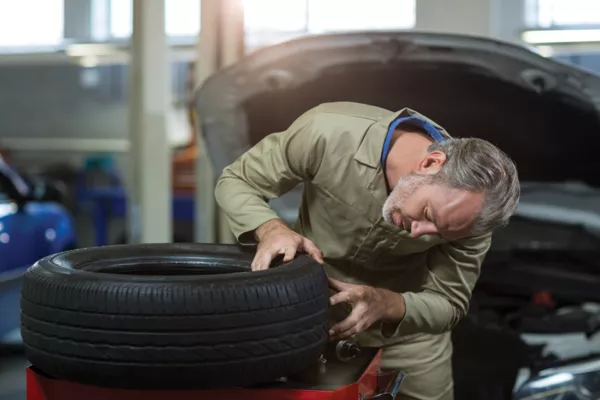
Check the size and location of the tire puncture
>>> Read more: How to prevent a flat tire - 7 handy tips for Pinoy drivers.
Check the size of the puncture
You can repair a puncture of ¼ inch in diameter or 6 mm. it is also limited to two punctures and should not be any closer than 16 inches apart. Anything beyond this size is not permitted to be repaired.
A larger tread punctured, huge straight, deep and irregular cuts can't also be repaired. This could have sliced through the steel belts. This would no longer provide the strength and durability for safe operation.
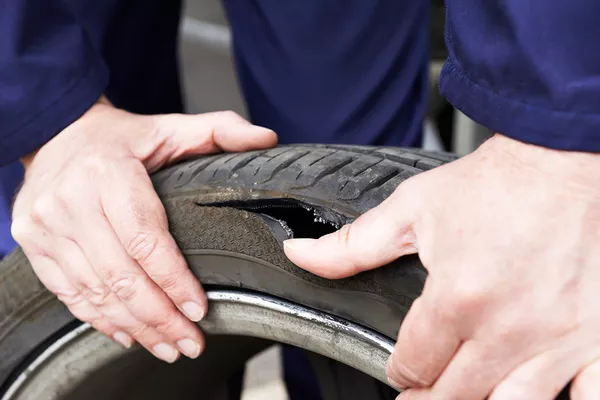
A larger tread punctured, huge straight, deep and irregular cuts can't also be repaired
Check the location
Repairs are limited only to the center tread area. Punctures in the shoulder or sidewall area should be required to replace the tire. All these are based on the agreed policy.
2. Cause of tire puncture
The most familiar cause of tire puncture is when penetrated with a sharp object such as; nails, screws, spike, thorns (especially barb wire), etc. other causes are;
Old tire - It is more likely to get punctured if your tire is old and is worn out. A new tire has an 8 mm thick tread and an added casing that gives an additional thickness of over a centimeter. A sharp object will be jammed in those layers first and might not even cause a deflation.
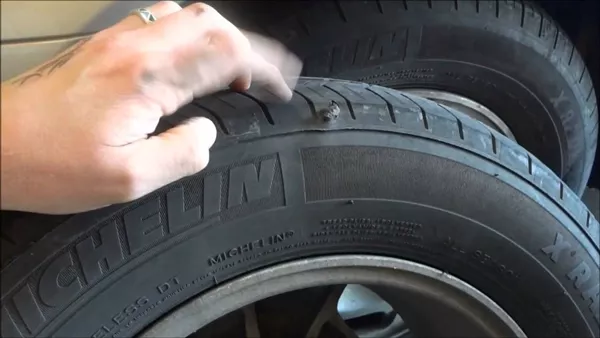
Wrong tire pressure - It is also susceptible to punctures
Pothole and curb - Driving in potholes and curb are unavoidable but driving high-speed to it might increase your chances of getting your tire punctured.
Wrong tire pressure - It is also susceptible to punctures. Either, over-inflated than the required amount of pressure can cause a worn-out tire and joints to stretch making it easily punctured and is very dangerous that can cause into a blowout. And low pressure can cause heat buildup inside because of more friction it receives making it prone to punctures.
Frequent patch up - Consider changing your tire of this is the case. Patch up is not as strong as the quality of the tire, therefore, it can be easily penetrated again and again and open up.
3. How to prevent puncture
“Prevention is better than cure’’ we all know that. Make this a habit not just in your tire but everything in your car.
All good drivers prepared for anything that comes on the road. so, if you are, you should have this with you.

All good drivers prepared for anything that comes on the road
- Spare tire - With a recommended pressure. What was the use of bringing it with you if you found out when you most need it that it is also flat? So always check it when you are getting your tire inflated.
- Correct tire pressure - As for the tire you are using maintain and check your tire pressure at least once a week. This means not to over inflate or under inflate your tire.
- Check the rim - Check the rim if there are a rim bending and rust build-up and get it fixed as soon as you can.
- Always bring a suitable repair kit for your tire or if possible a portable air compressor also.
- Consider sealant products in the tire to seal minor leaks
- To avoid further hassle put the spare tire, jack and jack handle accessible in the car.
- Most importantly, equip yourself with knowledge of how are you going to change your flat tire.
>>> Also check: Why do unused car tires wear off & How to preserve car tires?
4. How would you know if your tire is punctured?
If the front tire is punctured handling is shaky because of being unbalanced, this might also be a sign that it is a slow puncture. While driving you can hear a thump and feel a vibration, sometimes it is accompanied by a big dangle noise.
If one of the tires in front are punctured you will feel as if your steering is pulling you to the left or right. This depends on which side is punctured and this could also be a medium deflation. An under-inflated tire is less responsive and reduces cornering ability.
If the car suddenly deflects to the lift or the right. That is a blowout. It is dangerous when it happens when you are driving on a high-speed.
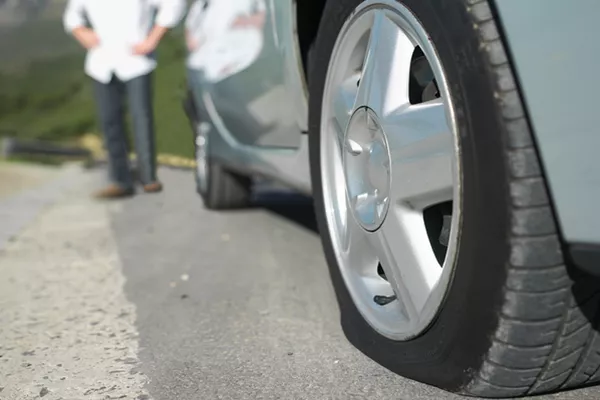
An under-inflated tire is less responsive and reduces cornering ability
5. What should you do if your tire is punctured?
If you are driving and the steering becomes hard and heavy and pulling you uncontrollably, this is the things you should do:
Calm down and focus on the situation. Yes! The first thing you will better do is DO NOT PANIC.
Stop the situation, how? If it is pulling you violently on the right continue steering on the right and keep your hands solid on the wheel to maintain and regain control. Do not make any sudden steering or going in the opposite direction as you will only loss control.
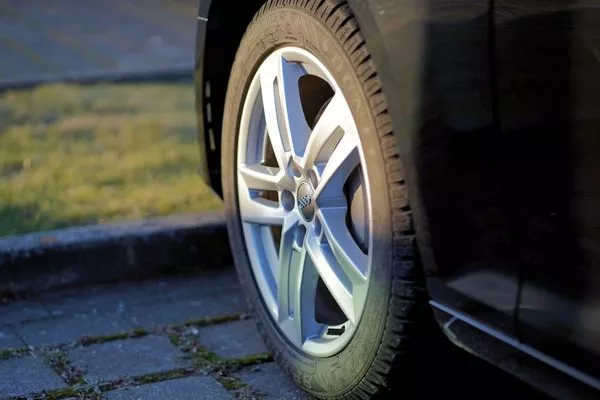
Put your car safely to pull over to the side of the road
Lastly, do not follow your instinct to stop it and apply the brakes. Your situation might be dangerous especially if you are driving at speed. If you rapidly apply the break this will only pull the car in the direction of the punctured tire.
Apply a gentle acceleration and keep your speed. Put your car safely to pull over to the side of the road.
>>> Also grasp your attention: Driving on a flat tire: Signs, warnings & tricks for Pinoy drivers.
Punctured tires no matter if it is tube-type or tubeless it should be repaired immediately according to the standard protocol. This will result in further damage to the rim that will cost you much more. A tire should be repaired properly as it also can cost you a life if not taken care of based on the industry-standard procedure.
Recent posts
- Nitrogen-filled tires: Assess its pros and cons Aug 16, 2022
- Fuel-efficient tire: Is it worth your choice? Nov 30, 2022
- Tire rotation: Everything that Filipino drivers need to know Feb 17, 2021
- Properly install tire chains for your car with 9 easy steps Aug 16, 2022
- Are worn off tires more effective? Oct 31, 2017












